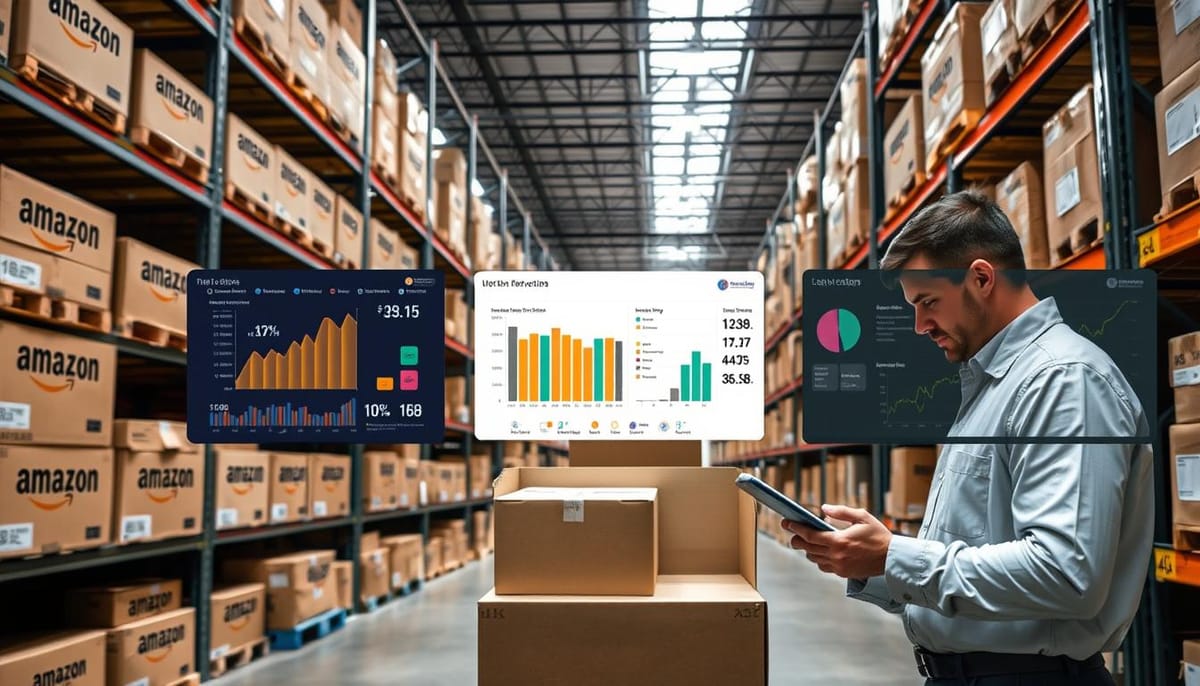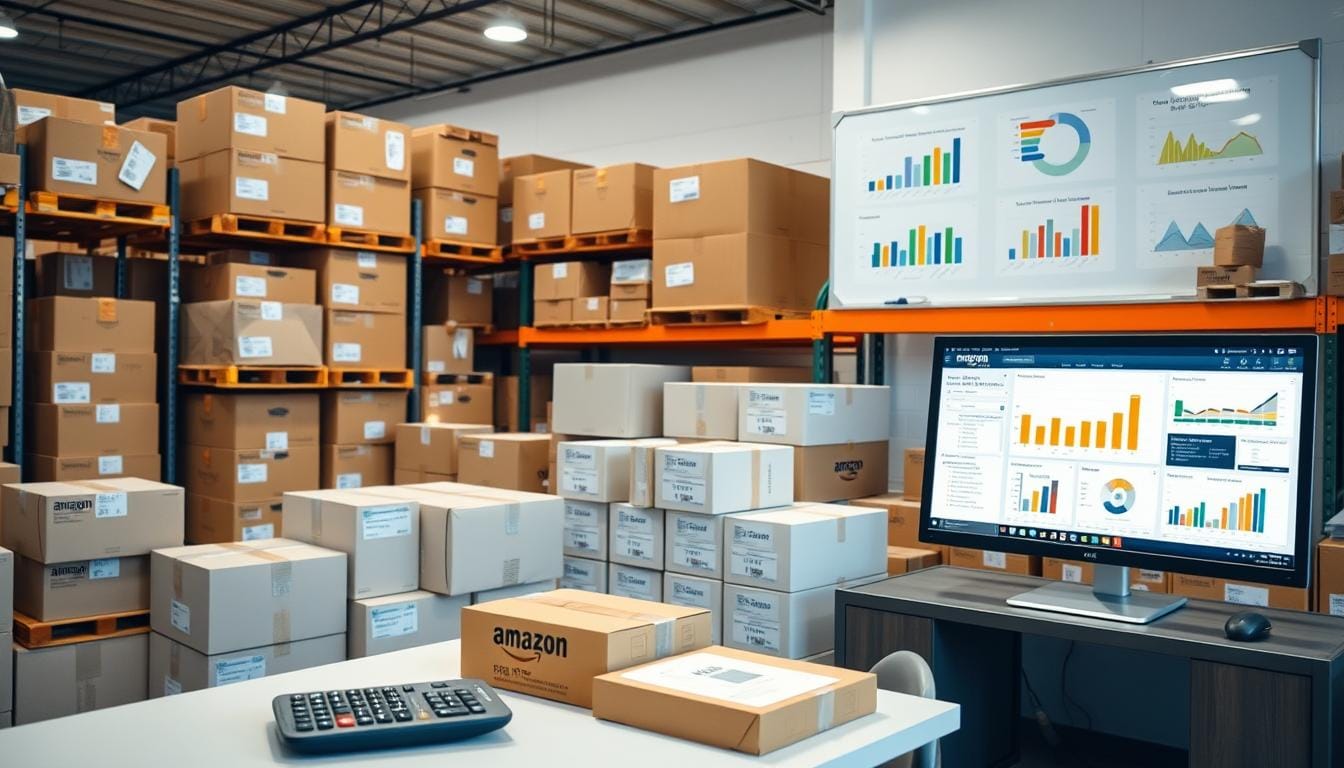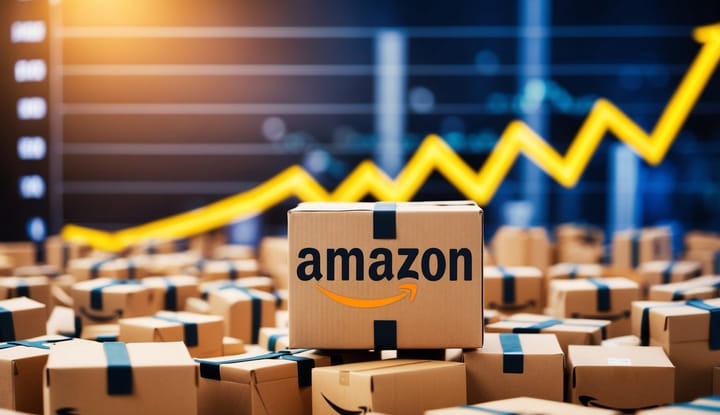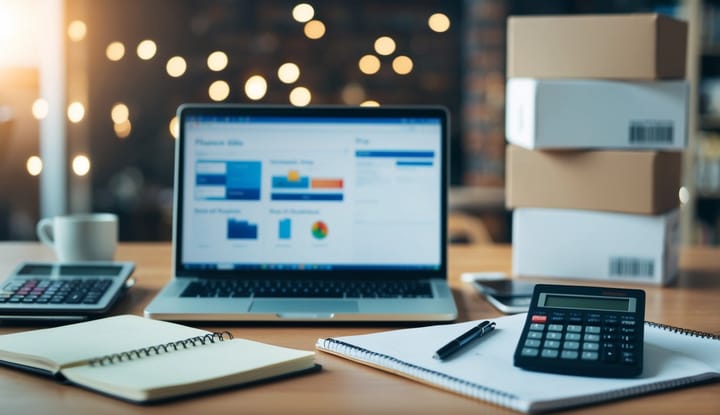Mastering Amazon FBA: Understanding Minimum Inventory Levels

Sarah, a budding entrepreneur in Singapore, was thrilled when her eco-friendly water bottles sold out quickly on Amazon FBA. She was happy with the positive reviews and rising sales. But, she soon got a notification from Amazon about low inventory levels and potential fees.
Sarah's story is common among sellers. Managing amazon fba inventory requirements is a big challenge. It's important to keep the right amount of stock to avoid overstocking. Knowing how to manage product stock levels is key to success in e-commerce.
In 2024, Amazon introduced a Low Inventory Level Fee. This fee kicks in when stock drops below 28 days of supply, based on sales history. For sellers like Sarah, understanding these inventory rules is crucial for success and survival in the Amazon marketplace.
Let's explore Amazon FBA inventory management together. We'll look at strategies for sellers to manage their stock levels effectively. From learning about amazon fba inventory requirements to optimizing stock, we'll find the right balance for your FBA business.
Key Takeaways
- Amazon's Low Inventory Level Fee impacts cash flow and requires strategic stock management
- The fee applies to standard-size products with less than 28 days of supply
- New sellers and products have grace periods for fee exemption
- Balancing inventory levels is crucial to avoid fees and stockouts
- Effective use of Amazon's inventory tools can optimize stock management
- Regular monitoring of historical supply metrics is essential for success
Introduction to Amazon FBA Inventory Management
Managing your stock well is key to doing well on Amazon. Knowing what Amazon needs from you can help your business grow.
The importance of proper stock management
Keeping your inventory in check is vital for a healthy Amazon business. It stops problems like too much stock, not enough stock, and high storage costs. A good system lets you guess demand well and fill orders fast.
How inventory levels impact seller success
Your stock levels really matter on Amazon. The right amount can speed up deliveries and boost sales. But, not enough stock can mean lost sales and extra fees.
Overview of Amazon's inventory policies
Amazon has rules to make sure things run smoothly. These include limits on how much you can send and a fee for low stock on certain items. Knowing these rules is key to planning your inventory well.
| Policy | Description | Impact |
|---|---|---|
| FBA Capacity Limits | Replaced weekly restock limits and quarterly storage volume limits | Affects how much inventory sellers can send to Amazon |
| Low-Level Inventory Fee | Applies to products with low inventory relative to customer demand | Encourages maintaining adequate stock levels |
| Minimum Inventory Level | Suggests minimum units per product in fulfillment centers | Helps improve delivery speeds and potential sales |
Learning how to manage your inventory on Amazon can really help your business grow.
Amazon FBA Inventory Requirements: The Basics
Knowing the basics of Amazon FBA inventory requirements is key for sellers. Managing your stock levels well can greatly impact your business. It affects both your costs and how happy your customers are.
Amazon FBA sellers usually aim to have 60 days' worth of inventory. This strategy helps keep costs down while being ready for sales. In January 2024, Amazon started charging a fee for sellers with low stock levels. This shows how important it is to keep enough stock.

Good inventory management stops stockouts, which can hurt your sales and reputation. It's also crucial to not have too much stock. Amazon sees products with over 90 days of supply as surplus.
| Inventory Aspect | Recommended Practice | Impact |
|---|---|---|
| Stock Level | 60 days' worth | Balances preparedness and storage costs |
| Minimum Stock | Avoid low-level inventory | Prevents fees and stockouts |
| Maximum Stock | Less than 90 days' supply | Avoids excess inventory fees |
Mastering Amazon FBA seller inventory requirements means finding the right balance. You need to be ready for sales peaks but avoid having too much stock. Using inventory management software can help. It gives you real-time updates on your stock, helping you make smart choices.
Is There a Minimum Stock for Amazon FBA?
Many Amazon FBA sellers ask about the minimum stock needed. There isn't a strict minimum, but a new metric called Minimum Inventory Level has been introduced. This change aims to help sellers avoid fees for low inventory, starting April 1, 2024.
Understanding the Low Inventory Level Fee
The Low Inventory Level Fee kicks in when both short-term and long-term supply levels drop below 28 days. Amazon figures this out by dividing average daily inventory by average daily sales. The fee depends on item size, weight, and how long it's been in stock.
| Historical Days of Supply | Fee Impact |
|---|---|
| 28 days or more | No fee |
| 21-27 days | Low fee |
| 14-20 days | Moderate fee |
| Less than 14 days | Highest fee |
Calculating Historical Days of Supply
Amazon uses a smart algorithm to figure out the minimum inventory levels for FBA. It looks at sales speed and seasonality. Sellers can check their inventory status on the FBA Inventory page in Seller Central to keep stock levels right.
Exemptions and Grace Periods
Amazon has special rules for some sellers and products. New professional sellers get a 365-day grace period. New-to-FBA parent products have 180 days. Items that are out of stock or auto-replenished by Amazon are also exempt.
"Sellers who keep inventory levels above the minimum for four weeks see an average sales increase of 15%."
Knowing these rules helps sellers plan better for stock replenishment on Amazon FBA. Keeping enough stock can help avoid fees and increase sales.
Strategies for Optimizing Amazon FBA Inventory Levels
Amazon FBA inventory optimization is key for sellers to stay ahead. Good Amazon FBA stock management means having the right amount of stock. This avoids extra fees and stockouts while boosting sales.
Balancing Stock to Avoid Fees and Stockouts
Keeping the right amount of stock is crucial for Amazon FBA inventory planning. Aim for 29-54 days of supply to avoid fees and prevent overstock. This way, products are always ready for customers without wasting money on too much stock.

Utilizing Amazon's Inventory Management Tools
Amazon has great tools for managing stock. The Inventory Health report is a must for checking stock levels. Using these tools helps sellers plan better and keep stock just right.
Implementing Effective Replenishment Cycles
Setting up good replenishment cycles is essential for Amazon FBA stock management. Think about:
- Sales velocity
- Seasonality
- Lead times
- Minimum order quantities
By looking at these factors, sellers can plan replenishment well. This keeps stock levels just right and saves money. Good planning also means forecasting demand to adjust stock levels.
| Inventory Metric | Optimal Range | Impact on Business |
|---|---|---|
| Days of Supply | 29-54 days | Avoids fees, prevents stockouts |
| Sell-Through Rate | Above 7% | Improves IPI score, increases efficiency |
| Reorder Point | Varies by product | Ensures timely restocking |
"Effective inventory management is the backbone of a successful Amazon FBA business. It's about finding the right balance between having enough stock to meet demand and avoiding excess inventory that ties up capital."
Impact of Inventory Levels on Amazon Seller Performance
Effective inventory management is crucial for Amazon FBA sellers. Keeping the right amount of stock is key to meeting Amazon FBA seller inventory requirements. This ensures orders are filled quickly, boosting customer happiness and search rankings.
The Amazon Inventory Performance Index (IPI) is a key metric for sellers. It ranges from 0 to 1,000. Sellers need to keep their IPI score above 400 to avoid storage limits and extra fees. It's important to balance stock levels to avoid a low IPI score.
To manage stock well, sellers should aim for 30-60 days' supply. This approach helps avoid running out of stock and the problems of having too much. Keeping a close eye on stock, forecasting demand, and adjusting stock levels are key to success.
Sellers also need to watch out for aged inventory. Surcharges kick in after 365 days in FBA. By focusing on these inventory management areas, Amazon FBA sellers can improve their performance. This helps them stay competitive and succeed in the fast-paced e-commerce world.
Frequently Asked Questions
Q: What is the new minimum inventory level metric for FBA sellers?
A: The new minimum inventory level metric for FBA sellers is a tool introduced by Amazon to help sellers maintain enough inventory to meet customer demand. This metric is calculated based on your sales volume, historical data, and Amazon's forecasting algorithms. It suggests the minimum number of units you should keep in stock to avoid running out of inventory and potentially losing sales.
Q: How does Amazon calculate the minimum inventory levels for FBA sellers?
A: Amazon calculates minimum inventory levels by analyzing various factors, including your product's sales history, seasonality, and projected demand. The Fulfillment by Amazon system uses advanced algorithms to determine the optimal inventory quantity needed to maintain a healthy stock level for at least 30 days. This helps ensure that you have enough inventory to meet customer demand while avoiding overstocking and excessive storage fees.
Q: What happens if I run out of stock as an FBA seller?
A: If you run out of stock as an FBA seller, you risk losing sales, search ranking, and potentially the Buy Box. Amazon may also reduce your product's visibility in search results. To avoid these issues, it's crucial to monitor your inventory levels closely and restock promptly. Utilizing Amazon's inventory management tools and the new minimum inventory level metric can help you maintain adequate stock levels and prevent stockouts.
Q: How much inventory should I have for an Amazon launch?
A: When launching a new product on Amazon, it's generally recommended to have enough inventory to cover at least 30 days of projected sales. However, the exact amount depends on various factors such as your marketing strategy, expected demand, and product seasonality. Consider using Amazon's FBA New Selection program, which offers benefits for new ASINs, and consult the new minimum inventory level metric for guidance on initial stock levels.
Q: How often should I restock my Amazon inventory?
A: The frequency of restocking your Amazon inventory depends on your sales volume, lead times, and the new minimum inventory level metric. As a general rule, aim to restock when your inventory reaches about 30 days of supply or when it hits the minimum level suggested by Amazon. Regular monitoring of your inventory levels and using Amazon's inventory management tools can help you determine the optimal restocking schedule for your products.
Q: What are FBA storage limits, and how do they affect my inventory?
A: FBA storage limits are restrictions imposed by Amazon on the amount of inventory you can store in their fulfillment centers. These limits are based on factors such as your sales history, inventory performance, and available space in Amazon warehouses. Storage limits can affect your ability to send in new inventory, so it's essential to manage your stock efficiently. Maintaining a healthy Inventory Performance Index (IPI) score can help you maximize your storage limits.
Q: How can I improve my Inventory Performance Index (IPI) score?
A: To improve your Inventory Performance Index (IPI) score, focus on these key areas: maintain sufficient inventory levels to avoid stockouts, reduce excess and aged inventory, fix stranded inventory issues promptly, and ensure your products are consistently available for purchase. Utilizing the new minimum inventory level metric and following Amazon's inventory management best practices can help you optimize your IPI score and potentially increase your FBA storage limits.
Q: What are the consequences of having too much inventory in Amazon FBA?
A: Having too much inventory in Amazon FBA can lead to several issues, including higher storage fees, reduced cash flow, and potential long-term storage fees for items that don't sell quickly. Overstocking can also negatively impact your IPI score, potentially resulting in lower storage limits. It's crucial to balance having enough inventory to meet demand while avoiding excess stock. Use Amazon's inventory management tools and the new minimum inventory level metric to optimize your inventory levels.
Q: How can I determine the right amount of inventory to send to Amazon FBA warehouses?
A: To determine the right amount of inventory to send to Amazon FBA warehouses, consider the following factors: your product's sales velocity, seasonality, lead times for manufacturing and shipping, and Amazon's suggested minimum inventory levels. Utilize Amazon's inventory management tools, including the new minimum inventory level metric, to forecast demand accurately. Additionally, monitor your Inventory Performance Index and adjust your inventory strategy accordingly to maintain optimal stock levels.
Q: Can I increase my FBA inventory storage limits?
A: Yes, you can potentially increase your FBA inventory storage limits by improving your overall inventory performance. Focus on maintaining a high Inventory Performance Index (IPI) score by keeping your inventory levels balanced, avoiding stockouts and excess inventory, and resolving any stranded inventory issues. Consistently strong sales performance and efficient inventory management can lead to increased storage limits over time. Regularly review Amazon's communication regarding your account's storage limits and adjust your strategy accordingly.
Having Trouble Managing FBA Inventory?
Join our mini-course at WAH Academy and learn fast how to set smart inventory levels, avoid stockouts, and keep your sales steady.
No overwhelm. Just clear, expert guidance.
Tap below to join now.



